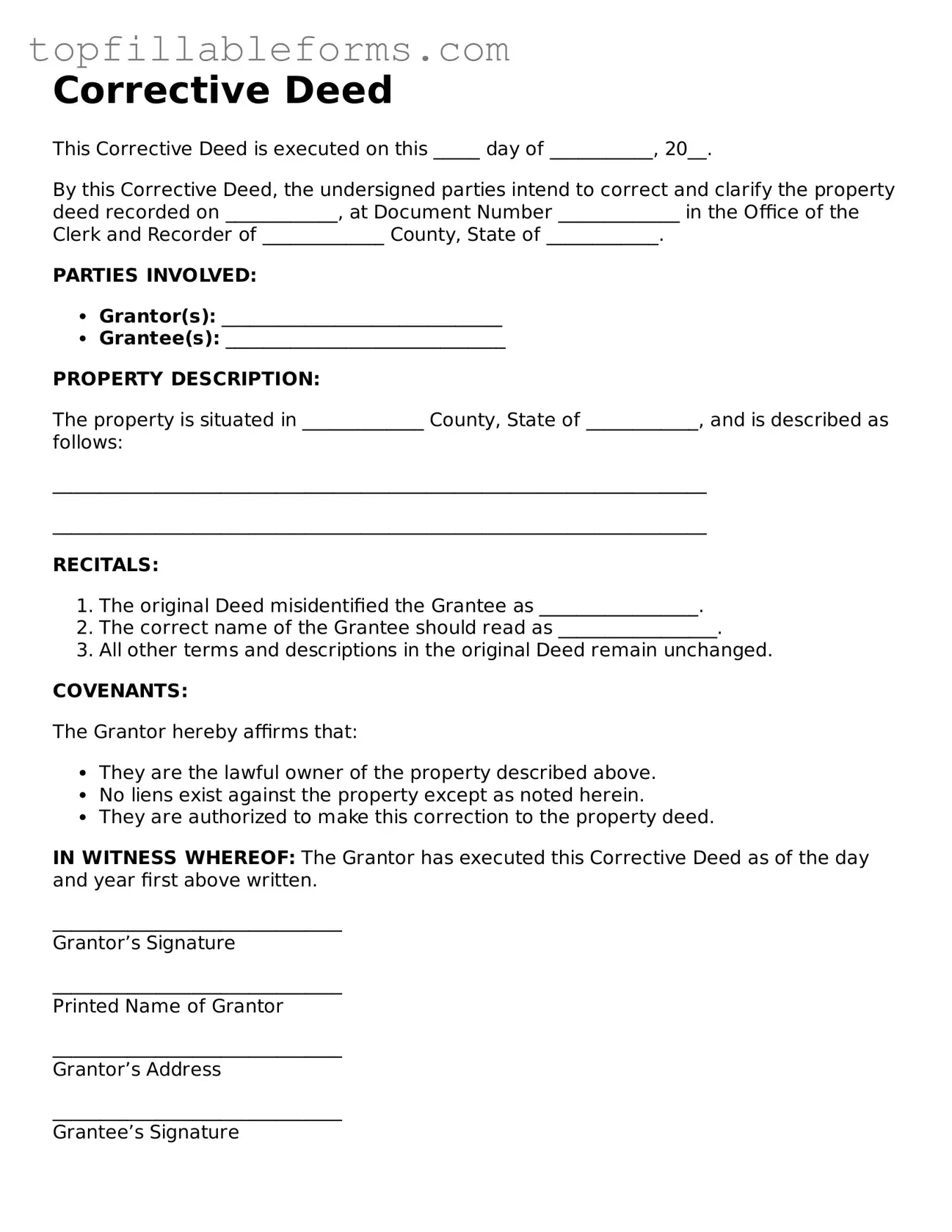Corrective Deed
This Corrective Deed is executed on this _____ day of ___________, 20__.
By this Corrective Deed, the undersigned parties intend to correct and clarify the property deed recorded on ____________, at Document Number _____________ in the Office of the Clerk and Recorder of _____________ County, State of ____________.
PARTIES INVOLVED:
- Grantor(s): ______________________________
- Grantee(s): ______________________________
PROPERTY DESCRIPTION:
The property is situated in _____________ County, State of ____________, and is described as follows:
______________________________________________________________________
______________________________________________________________________
RECITALS:
- The original Deed misidentified the Grantee as _________________.
- The correct name of the Grantee should read as _________________.
- All other terms and descriptions in the original Deed remain unchanged.
COVENANTS:
The Grantor hereby affirms that:
- They are the lawful owner of the property described above.
- No liens exist against the property except as noted herein.
- They are authorized to make this correction to the property deed.
IN WITNESS WHEREOF: The Grantor has executed this Corrective Deed as of the day and year first above written.
_______________________________
Grantor’s Signature
_______________________________
Printed Name of Grantor
_______________________________
Grantor’s Address
_______________________________
Grantee’s Signature
_______________________________
Printed Name of Grantee
_______________________________
Grantee’s Address
Executed in the presence of:
_______________________________
Witness Signature
_______________________________
Printed Name of Witness
_______________________________
Date
This Corrective Deed is intended to comply with all applicable laws of the State of ____________. It is recommended that both parties consult with legal counsel before executing this document.
